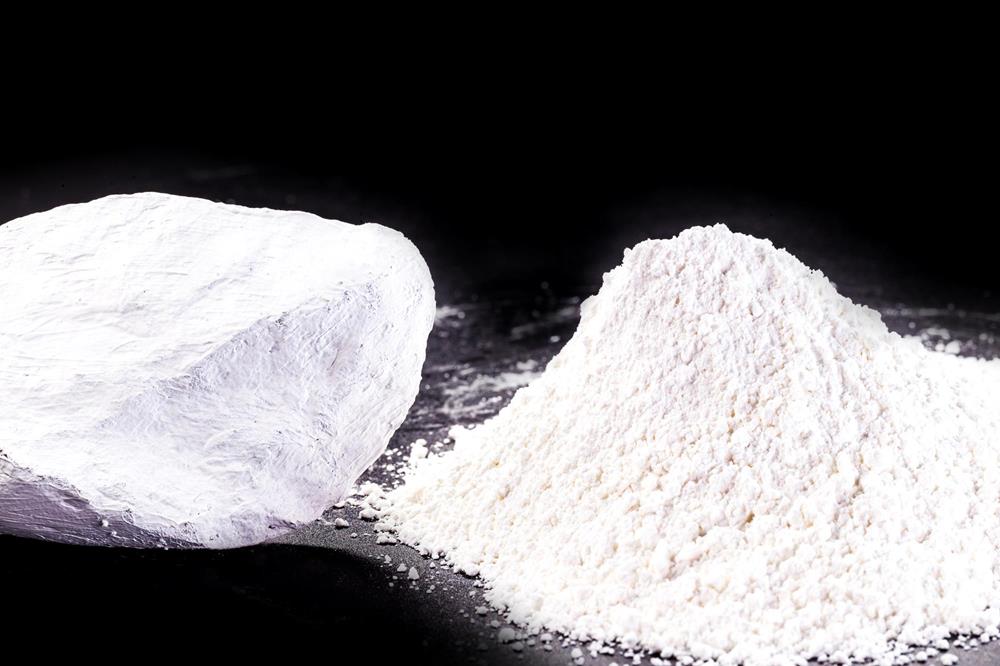Kaolin’s four innovative application areas and prospects

Kaolin, a 1:1 layered silicate mineral, boasts numerous properties, including dispersibility, plasticity, sinterability, refractory properties, ion exchangeability, and chemical stability, making it widely used in various industrial fields. Currently, kaolin’s applications are primarily concentrated in traditional industries such as ceramics, papermaking, and refractories.
1. High-Performance Composites
The application of kaolin in composites can improve the surface properties (such as adsorption capacity) of materials.
The benefits of kaolin in composites include enhancing adsorption, enhancing electrical properties, improving thermal stability/fire resistance, and improving mechanical stability. However, practical applications still present challenges, such as insufficient dispersibility and interfacial compatibility of kaolin in composites, which may limit its effectiveness.
Future research directions include developing more efficient and green kaolin surface modification technologies to improve its dispersibility and compatibility with matrix materials; exploring the design of multifunctional kaolin-based composites to meet the needs of specific applications, such as energy harvesting, wastewater treatment, and fire safety; and further increasing kaolin’s specific surface area and number of active sites through nanoscale processing and molecular manipulation, thereby enhancing its performance. Furthermore, efforts should be made to promote low-cost and environmentally friendly production processes for kaolin composites, and to integrate intelligent manufacturing technologies to achieve large-scale application.
2. Porous Materials: Molecular Sieve Field
Molecular sieves are materials with an ordered pore structure that selectively adsorb different molecules. They are widely used in oil refining, petrochemicals, agriculture, and water treatment. Kaolin, a common and inexpensive natural mineral rich in silica and alumina, can be directly used to synthesize zeolite molecular sieves. Compared with traditional and potentially toxic silicon and aluminum sources, kaolin is not only environmentally friendly but also reduces costs and simplifies the synthesis process.
Kaolin not only activates silicate and alumina activity through simple pretreatments such as calcination and acid leaching, but also further enhances molecular sieve performance through templating agent manipulation and temperature optimization.
3. Biomedicine
Kaolin is a type of nanosilicate clay mineral characterized by excellent biocompatibility, high specific surface area, chemical inertness, colloidal properties, and thixotropy. In the biomedicine field, research is gradually shifting from basic drug carrier applications to more complex biomedical applications such as gene therapy and 3D bioprinting. Kaolin’s applications have expanded from simple physical support and drug release to complex systems promoting cell growth and gene delivery.
4. Energy Storage
Energy storage has always been a hot topic. Seeking efficient and sustainable energy storage solutions is one of the key paths to addressing global energy challenges. Kaolin, with its unique structure and multifunctionality, has become an ideal candidate for energy storage. Kaolin is used in a variety of energy storage devices such as lithium-ion batteries, supercapacitors, and microbial fuel cells.
The future application prospects of kaolin are as follows:
a. Research and development of innovative materials will focus on kaolin nano-processing and surface modification technologies, aiming to enhance its performance in electronics, energy storage, and other fields. For example, kaolin-based nanocomposites can be developed by combining them with polymers or carbon-based materials to improve mechanical strength and conductivity.
b. Kaolin has the potential to provide solutions to environmental issues such as water treatment and soil remediation, particularly in the removal of heavy metals and adsorption of pollutants.
c. The integration of interdisciplinary technologies will promote the innovative application of kaolin in the biopharmaceutical field, integrating biotechnology to develop drug delivery systems or bioactive scaffolds.
d. With the increasing market demand for environmentally friendly materials, companies should strengthen collaboration with R&D institutions to transform innovative discoveries into competitive products, such as high-temperature, durable kaolin ceramics or lightweight composites.
e. With the global emphasis on sustainable development, policy support and economic feasibility will influence the direction of kaolin R&D and application. Therefore, the industry needs to closely monitor resource availability and cost optimization, while strengthening risk management and enhancing global competitiveness to cope with the complex international environment.
